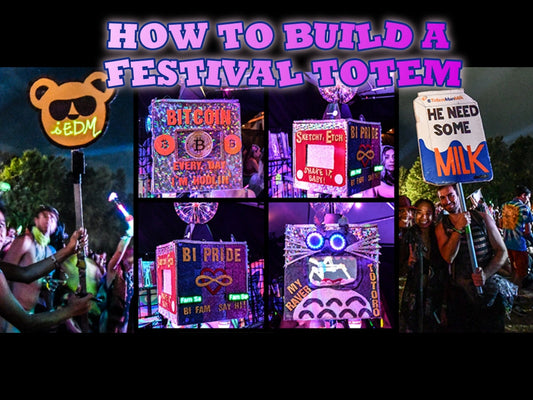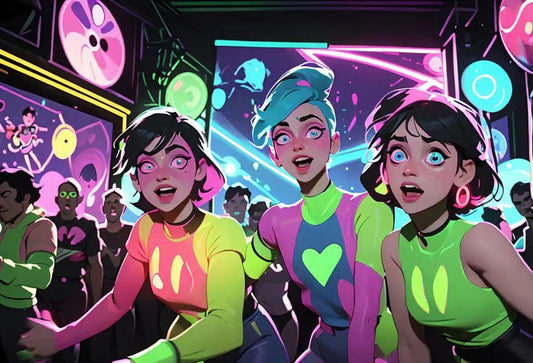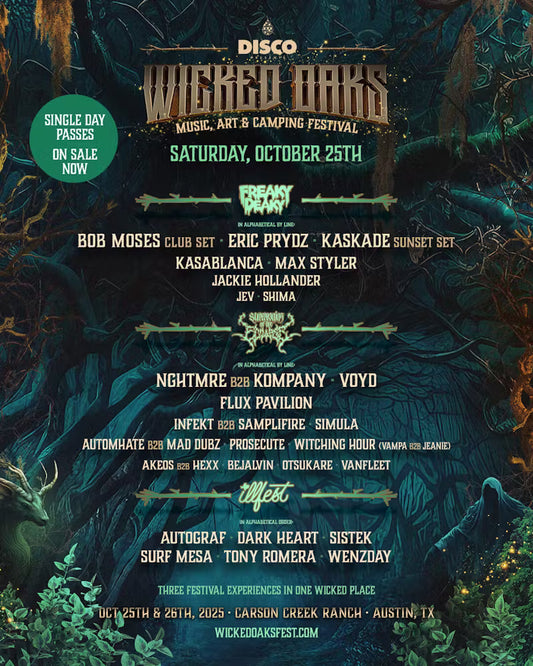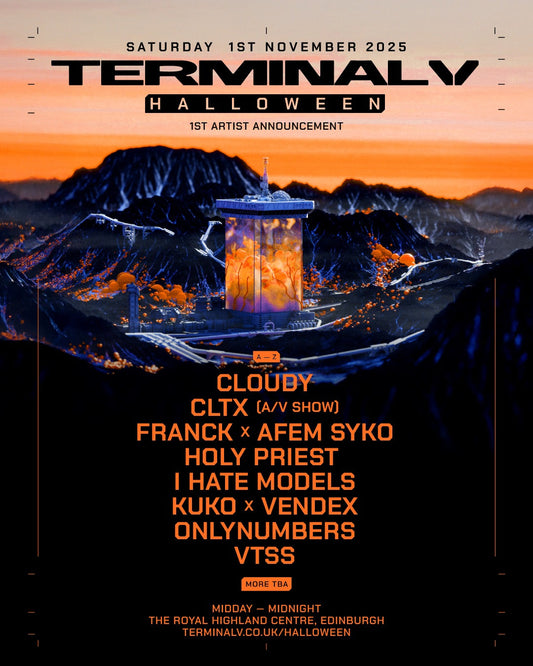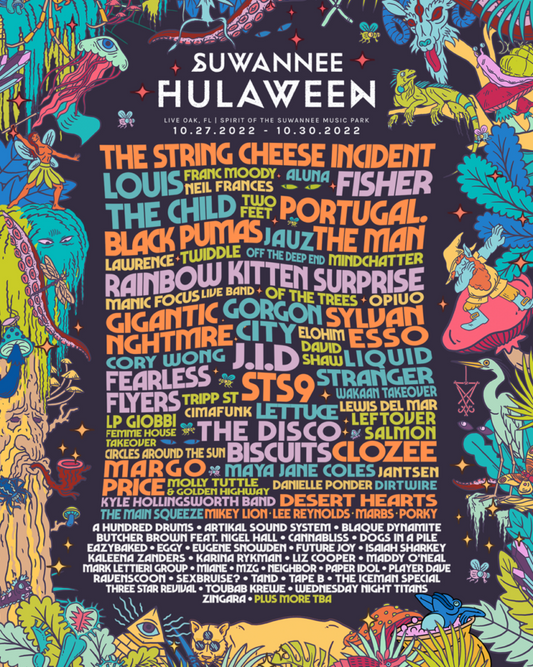
Top 5 Trends and Developments in the Music Festival Industry in 2025
Share
The music festival industry has seen rapid growth over the past few decades, transforming into one of the most significant segments of the live entertainment business. From intimate gatherings to massive global events, music festivals have become cultural touchstones, attracting millions of fans from around the world. However, with rapid growth comes the challenge of keeping up with evolving trends, societal changes, and global challenges. As we dive deeper into 2025, several recent developments have taken shape within the music festival landscape, influencing how they are planned, executed, and experienced. From innovative technologies to new sustainability efforts, here’s a look at some of the most noteworthy trends and news in the music festival industry.
These are the Top 5 Trends and Developments in the Music Festival Industry in 2025
1. Sustainability Takes Center Stage
Sustainability has become one of the most discussed topics in recent music festival industry news. As festivals continue to grow in size and scope, the environmental impact has become a focal point for organizers, attendees, and artists alike. Several festivals have begun to incorporate greener practices, aiming to reduce their carbon footprint and environmental impact.
A prime example of this is the Green Music Initiative, which has been adopted by many festivals worldwide. This initiative focuses on reducing waste, conserving energy, and encouraging eco-friendly practices both onsite and offsite. Many festivals, including Glastonbury, Coachella, and Bonnaroo, have pledged to reduce plastic use, improve waste management, and encourage attendees to bring reusable water bottles. More than just cutting down on plastic cups and bottles, these festivals are also working with local vendors to ensure that all food packaging is compostable or recyclable.
In addition, renewable energy is making its way to festivals. For example, the Electric Daisy Carnival in Las Vegas has committed to using solar-powered stages, while Burning Man in Nevada is known for its efforts to leave no trace on the environment. As sustainability becomes a key concern for younger generations of music fans, it’s likely that these efforts will continue to grow and set the standard for festivals in the years to come.
2. The Role of Technology and Virtual Festivals
One of the most significant changes to the festival industry in recent years has been the integration of technology. Whether through virtual festivals, live-streaming performances, or interactive fan experiences, technology is changing the way fans connect with events.
The COVID-19 pandemic was a catalyst for this digital shift. With festivals being canceled worldwide, many organizers turned to virtual platforms to continue reaching their audiences. Virtual events like Tomorrowland’s online edition, Coachella’s live-streamed performances, and Lollapalooza’s virtual programming offered fans a taste of festival magic from the safety of their homes. While some feared these digital events might be a one-off solution, it’s now clear that virtual and hybrid festivals are here to stay.
Hybrid festivals—those combining both physical and virtual experiences—are becoming increasingly popular. Ultra Music Festival in Miami, for example, offers virtual access to their mainstage performances. The appeal of hybrid festivals is undeniable: they allow fans who may not have the time or resources to travel to still participate in the festival experience. Additionally, they provide global reach, enabling fans from around the world to enjoy their favorite artists live.
Interactive technologies, such as augmented reality (AR) and virtual reality (VR), are also being tested at festivals. Tomorrowland has been experimenting with AR and VR to enhance attendee experiences, from virtual meetups with artists to immersive stage visuals. These technologies not only expand what festivals can offer in terms of engagement but also provide new revenue streams and opportunities for creative marketing.
3. Festival Accessibility and Inclusivity
Another prominent trend in the music festival industry has been the push for increased accessibility and inclusivity. Music festivals are no longer just about the music—they are spaces for people to gather and celebrate culture, art, and diversity. As a result, organizers have been increasingly prioritizing initiatives that make festivals more welcoming and accessible for all individuals, regardless of their background, abilities, or identities.
Many festivals have worked to improve accessibility for individuals with disabilities by offering ADA-compliant spaces, accessible viewing platforms, and transportation options. Lollapalooza, for example, has worked with organizations like Access Lollapalooza to improve access for those with mobility challenges. Similarly, Burning Man has a designated “Accessibility Team” that helps attendees with disabilities navigate the event’s vast desert landscape.
Inclusivity also goes beyond physical access. A growing number of festivals are focusing on representation and diversity, ensuring that lineups reflect a broad spectrum of genres, genders, and cultural backgrounds. The Afropunk Festival, for example, has long been celebrated for its focus on Black culture, inclusivity, and artistic expression. Other festivals, like Coachella, have faced criticism for underrepresentation in the past but have been working to diversify their lineups in response to growing calls for change.
4. Rising Popularity of Smaller, Niche Festivals
While large-scale music festivals like Coachella, Electric Daisy Carnival, and Lollapalooza still draw massive crowds, there has been a noticeable rise in the popularity of smaller, niche festivals. These events often cater to specific genres, subcultures, or fan communities, offering a more intimate and personalized experience. Festivals such as Pitchfork Music Festival, Hardly Strictly Bluegrass, and Shaky Knees have carved out a dedicated following due to their focus on specific genres or musical styles.
One key factor in the rise of smaller festivals is the demand for unique experiences. Fans are increasingly seeking out festivals that align with their personal tastes, whether that means a deep dive into indie music, electronic genres, or niche subcultures. These smaller festivals also tend to be more manageable and accessible, offering a more relaxed atmosphere without the overwhelming crowds and logistical challenges of massive events.
Additionally, many of these niche festivals emphasize community-building and engagement over spectacle. Attendees often have the opportunity to interact with performers and fellow fans in more meaningful ways, which can create lasting memories and stronger emotional connections with the music and artists.
5. Economic Recovery and Challenges in the Post-Pandemic Era
The music festival industry was severely impacted by the COVID-19 pandemic, with cancellations, postponements, and financial losses affecting almost every major festival globally. However, as the world emerges from the pandemic, the industry is beginning to recover, albeit with new challenges. Attendance numbers are returning to pre-pandemic levels, but many festivals are facing the pressures of rising costs—particularly in terms of production, staffing, and talent fees.
To counter these rising costs, many festivals are turning to increased sponsorships, partnerships, and premium ticket options. VIP and exclusive experiences have become a major source of revenue, offering festival-goers perks like backstage access, luxury accommodations, and exclusive viewing areas. Additionally, more festivals are exploring unique, non-traditional sponsorships, such as collaborations with tech companies, sustainability-focused brands, or eco-friendly transportation services.
Though many festivals are back and thriving, the recovery is still uneven. Smaller festivals and independent promoters, in particular, have struggled to return to profitability. Some have had to raise ticket prices to stay afloat, which in turn has sparked debates over the affordability and accessibility of festivals moving forward.
Conclusion: A Dynamic and Evolving Industry
The music festival industry is in a state of constant evolution, with new technologies, changing audience expectations, and an increasing focus on sustainability all playing pivotal roles in shaping its future. As we move through 2025 and beyond, the rise of hybrid experiences, the prioritization of diversity and inclusivity, and the growth of smaller niche festivals suggest that the industry will continue to evolve in ways that reflect the diverse and dynamic interests of global audiences.
While the industry faces challenges, particularly regarding the economic impact of the pandemic and the environmental consequences of large-scale events, the innovations and adaptations seen over the past few years show that music festivals are more resilient and creative than ever. For festivalgoers, this means more diverse experiences, more opportunities to connect with their favorite artists, and a growing focus on making festivals a force for good in the world.


